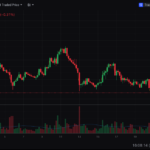Decentralized finance (DeFi) has introduced a new way for investors and traders to interact with digital assets. At the heart of this ecosystem are decentralized liquidity pools—smart contract–based reserves that allow users to trade without relying on centralized intermediaries. Among the key players in this space is SushiSwap, a protocol that combines trading, liquidity provision, and yield farming in one ecosystem.
🔹 What Are Decentralized Liquidity Pools?
Liquidity pools are collections of tokens locked in smart contracts, used to facilitate trading on decentralized exchanges (DEXs). Instead of depending on traditional order books, DEXs use automated market makers (AMMs), which determine prices based on supply and demand within the pool.
Benefits include:
- ✅ Permissionless access: Anyone can provide liquidity and earn fees.
- ✅ Transparency: All transactions are recorded on-chain.
- ✅ Passive income opportunities: Liquidity providers (LPs) earn a share of transaction fees and incentives.
🔹 SushiSwap’s Approach
SushiSwap was launched in 2020 as a fork of Uniswap but has since evolved into a multi-chain DeFi ecosystem. Today, it operates across Ethereum, Polygon, BNB Chain, Arbitrum, and other networks.
Key features:
- Liquidity Provision: Users can deposit pairs of tokens (e.g., ETH/USDT) into pools and earn rewards.
- SUSHI Token: Native governance and utility token, also used for staking in the “xSUSHI” pool.
- Onsen Program: Special liquidity mining campaigns incentivizing new or strategic pairs.
- Cross-Chain Functionality: SushiSwap allows bridging assets and providing liquidity across multiple blockchains.
🔹 Risks and Challenges
Despite the opportunities, providing liquidity on SushiSwap comes with risks:
- ⚠️ Impermanent Loss: LPs may face losses if token prices move significantly.
- ⚠️ Smart Contract Vulnerabilities: Exploits in DeFi code can lead to loss of funds.
- ⚠️ Market Volatility: High volatility can affect pool performance and yields.
🔹 The Future of SushiSwap and DeFi Liquidity
SushiSwap is moving beyond its roots as a simple AMM. The project is expanding into lending, staking, and even NFT marketplaces. With institutional interest in DeFi growing, decentralized liquidity pools could play a crucial role in replacing traditional order book–based exchanges.
For investors and developers, SushiSwap remains a gateway into the decentralized economy, combining innovation with risk—and opportunity.
✅ Takeaway: Decentralized liquidity pools are the backbone of DeFi. SushiSwap shows how innovation in AMM design and multi-chain expansion continues to shape the future of decentralized trading.







